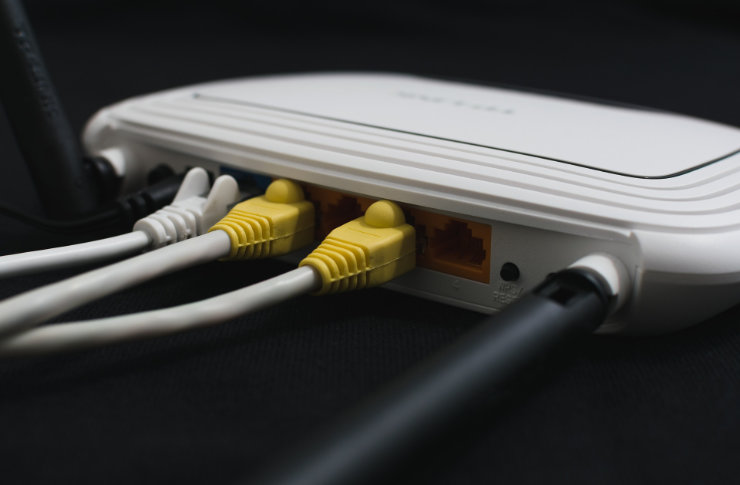Understanding Internet Providers: Your Guide to Connectivity Options
In today's digital age, reliable internet connectivity has become an essential utility for homes and businesses alike. Internet Service Providers (ISPs) play a crucial role in delivering this vital service to users worldwide. This article will explore the various types of internet providers, technologies they use, and factors to consider when choosing the right provider for your needs.

-
Fiber-Optic Internet Providers: Fiber providers use advanced fiber-optic technology to transmit data using pulses of light through thin glass or plastic fibers. This results in extremely fast and reliable internet connections, though availability may be limited in some areas.
-
DSL (Digital Subscriber Line) Providers: DSL technology utilizes existing telephone lines to transmit data. While not as fast as cable or fiber, DSL can be a reliable option, especially in areas where other technologies are not available.
-
Satellite Internet Providers: These companies use orbiting satellites to provide internet access, making them an option for rural or remote areas where terrestrial networks are not available. However, satellite internet can be affected by weather conditions and may have higher latency.
-
Fixed Wireless Providers: This technology uses radio waves to transmit data between a fixed antenna at the customer’s location and the provider’s network. It can be a good option for rural areas where other types of internet infrastructure are lacking.
How does fiber internet technology work?
Fiber-optic internet is often considered the gold standard of broadband technology due to its superior speed and reliability. Here’s how it works:
-
Data Transmission: Information is converted into pulses of light, which are then sent through thin strands of glass or plastic fibers.
-
Optical Network: The fiber-optic cables form a network that can span long distances with minimal signal degradation.
-
Optical-Electrical Conversion: At the end-user’s location, the light signals are converted back into electrical signals that can be read by computers and other devices.
-
Symmetrical Speeds: Fiber technology often allows for symmetrical upload and download speeds, which is beneficial for activities like video conferencing and large file transfers.
The use of light for data transmission allows fiber networks to achieve much higher speeds and lower latency compared to traditional copper-based networks.
What factors should you consider when choosing an internet provider?
Selecting the right internet provider involves weighing several factors:
-
Availability: Not all providers offer service in every area. Check which options are available at your specific location.
-
Speed: Consider your household’s internet usage habits and choose a plan that can accommodate your needs, whether it’s basic browsing or heavy streaming and gaming.
-
Reliability: Look for providers with a reputation for consistent service and minimal downtime.
-
Cost: Compare pricing plans and look for any hidden fees or equipment rental charges.
-
Customer Service: Research customer reviews and ratings to gauge the quality of support you can expect.
-
Data Caps: Some providers impose limits on how much data you can use per month. If you’re a heavy user, look for plans with high or unlimited data allowances.
How do broadband technologies compare in terms of speed and reliability?
Different broadband technologies offer varying levels of performance:
| Technology | Typical Download Speeds | Reliability | Best For |
|---|---|---|---|
| Fiber | 300 Mbps - 1 Gbps+ | Very High | Heavy users, businesses, streaming, gaming |
| Cable | 10 Mbps - 1 Gbps | High | General use, streaming, moderate gaming |
| DSL | 1 Mbps - 100 Mbps | Moderate | Basic browsing, email, light streaming |
| Satellite | 12 Mbps - 100 Mbps | Variable | Rural areas with limited options |
| Fixed Wireless | 5 Mbps - 1 Gbps | Moderate to High | Rural and suburban areas |
Prices, rates, or cost estimates mentioned in this article are based on the latest available information but may change over time. Independent research is advised before making financial decisions.
What role does network infrastructure play in internet service quality?
The quality of internet service is heavily dependent on the underlying network infrastructure:
-
Last-Mile Connectivity: This refers to the final leg of the network that connects the provider’s infrastructure to the end-user. The technology used here (fiber, copper, wireless) significantly impacts speed and reliability.
-
Backhaul Networks: These are the high-capacity lines that connect local networks to the broader internet. Robust backhaul infrastructure is crucial for handling large volumes of data.
-
Peering Arrangements: How internet providers interconnect with each other and with content delivery networks can affect the speed and efficiency of data transmission across the internet.
-
Network Redundancy: Providers that invest in redundant network paths can offer more reliable service by rerouting traffic in case of outages or congestion.
-
Network Maintenance and Upgrades: Regular maintenance and timely upgrades to network equipment and software are essential for optimal performance and security.
Understanding these aspects of internet service provision can help users make informed decisions when selecting a provider and plan that best suits their needs. As technology continues to evolve, staying informed about the latest developments in broadband technology can help ensure you’re getting the most out of your internet connection.





